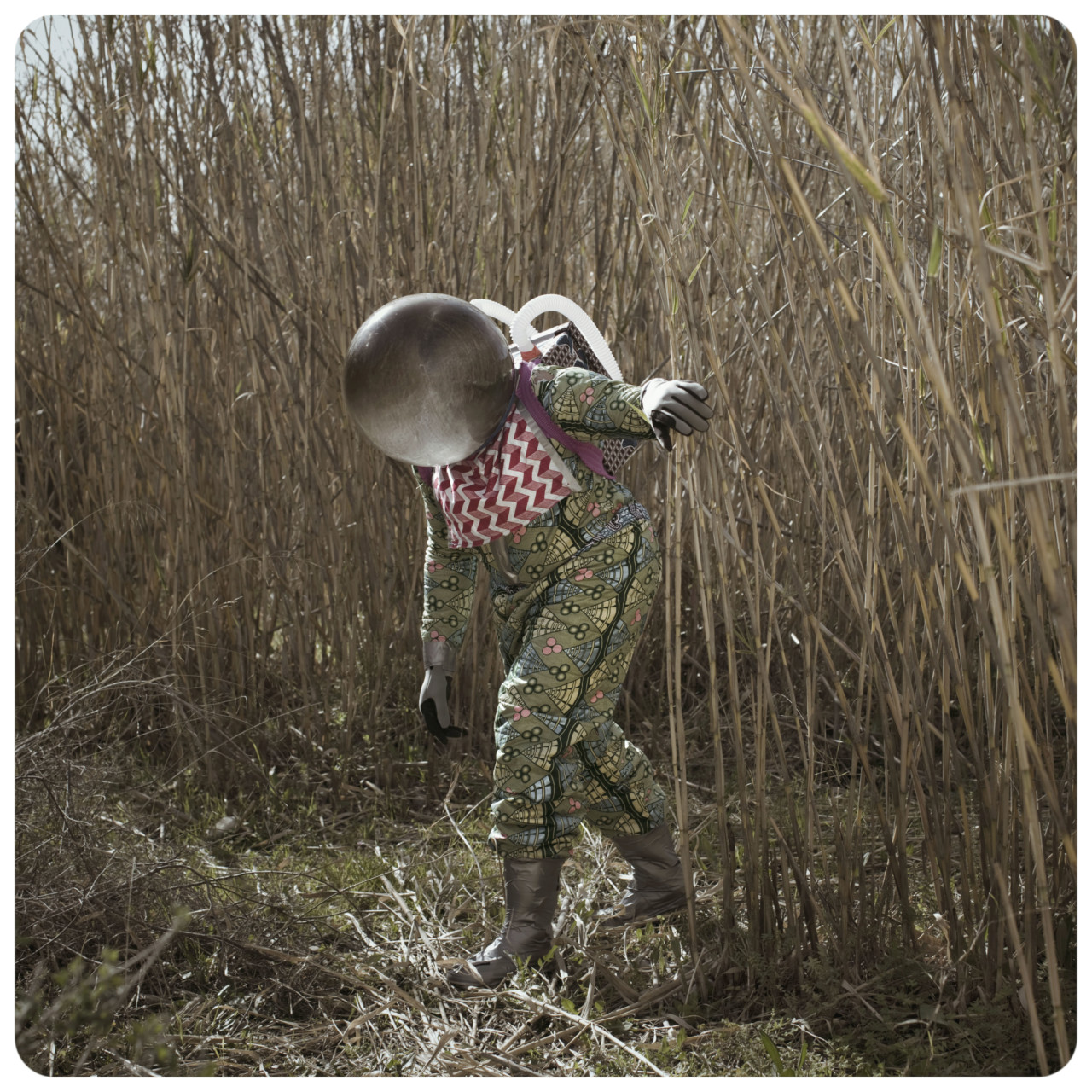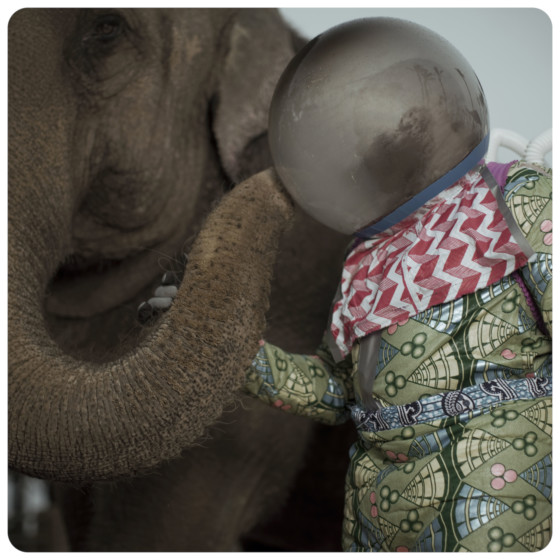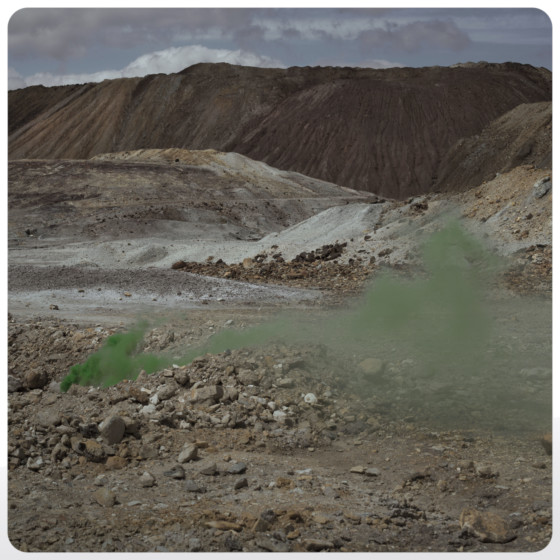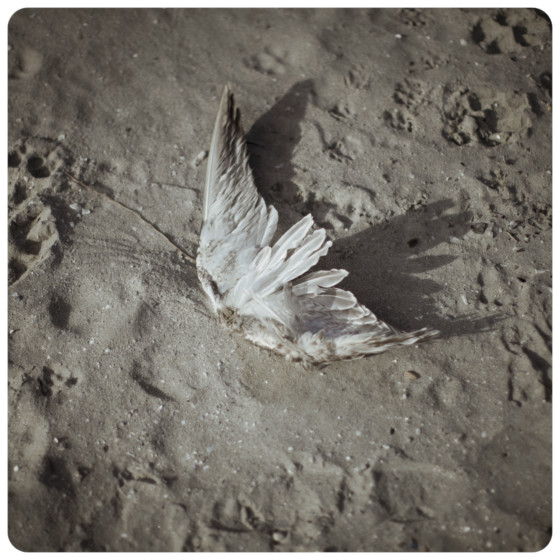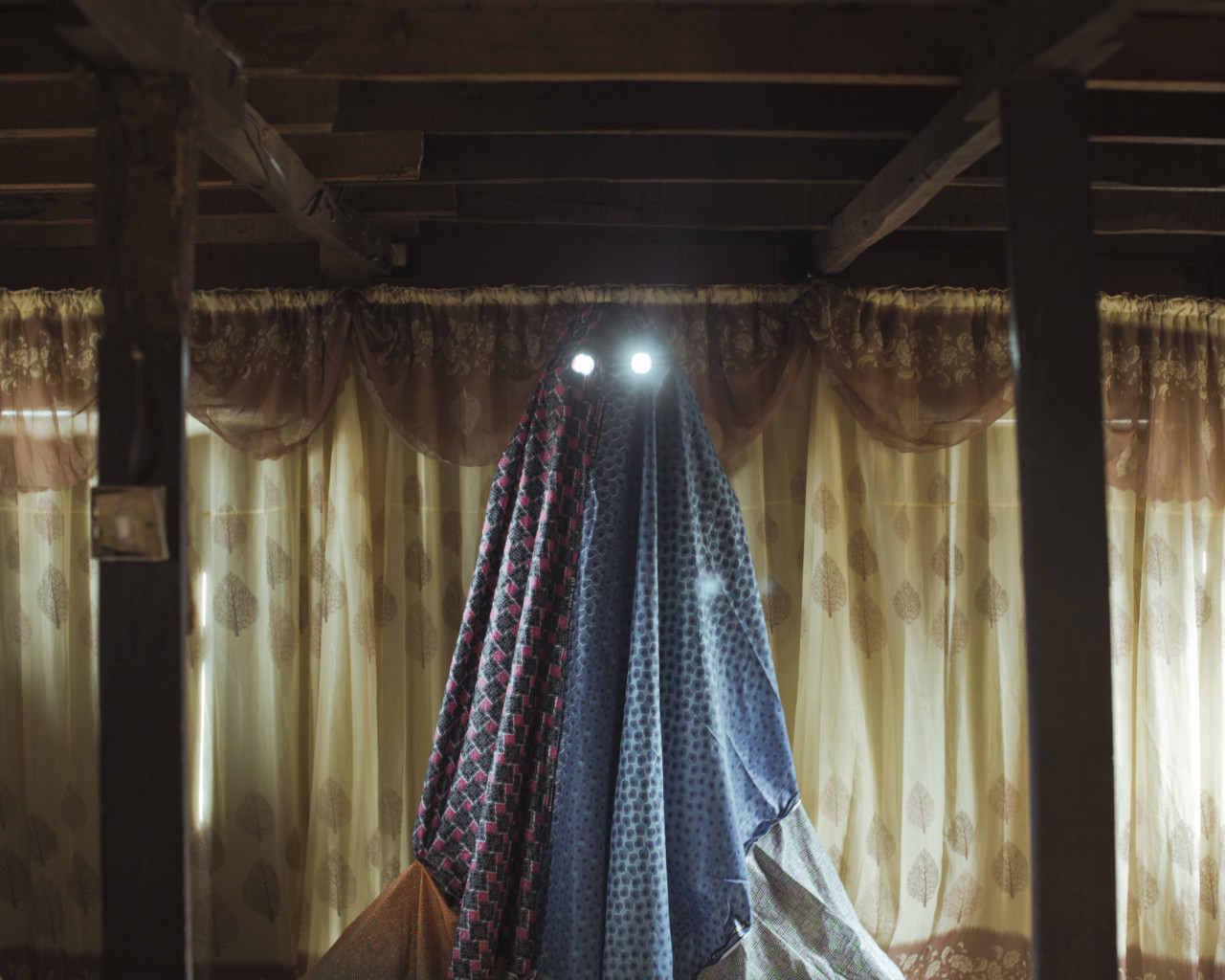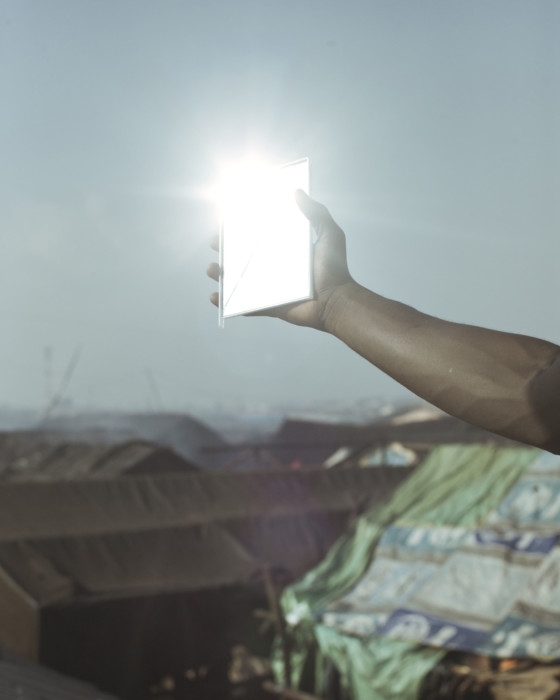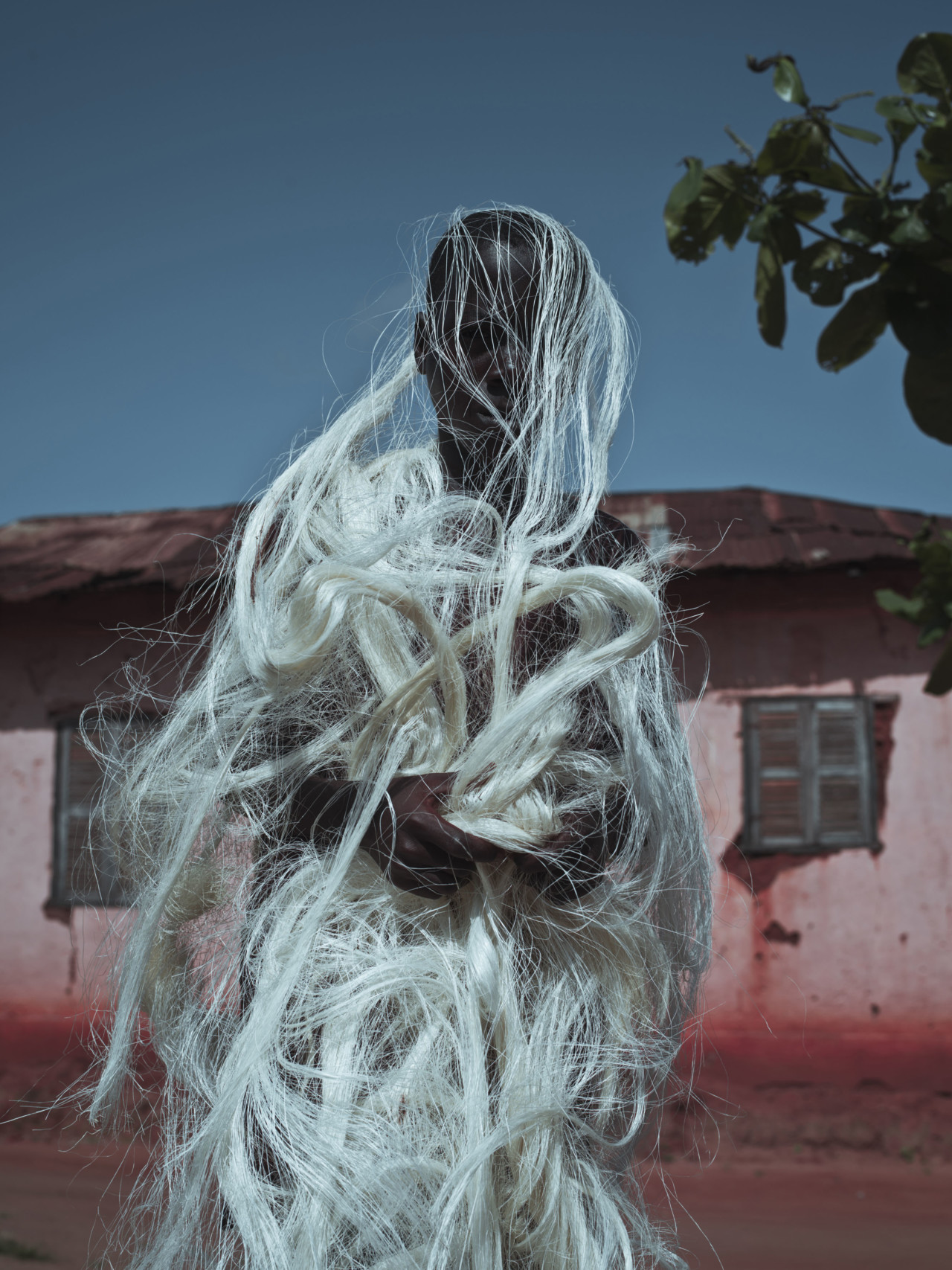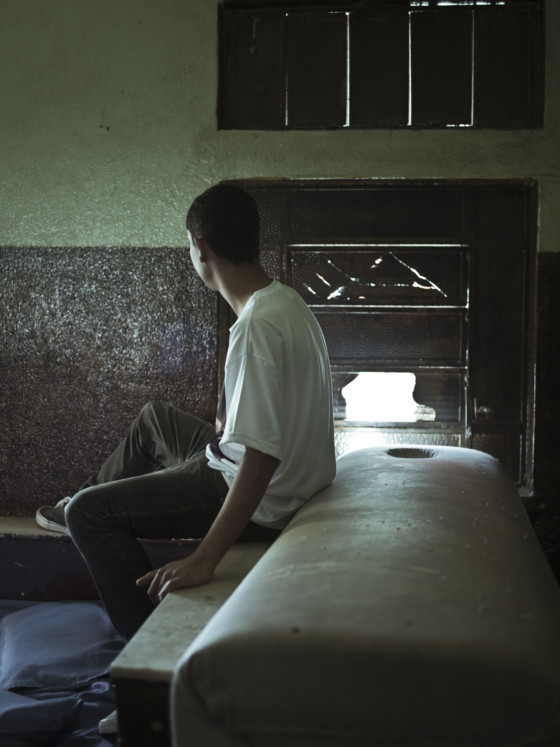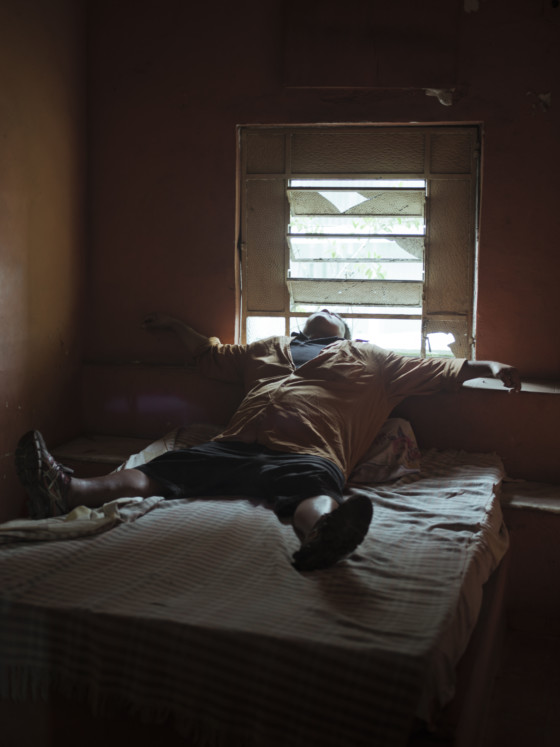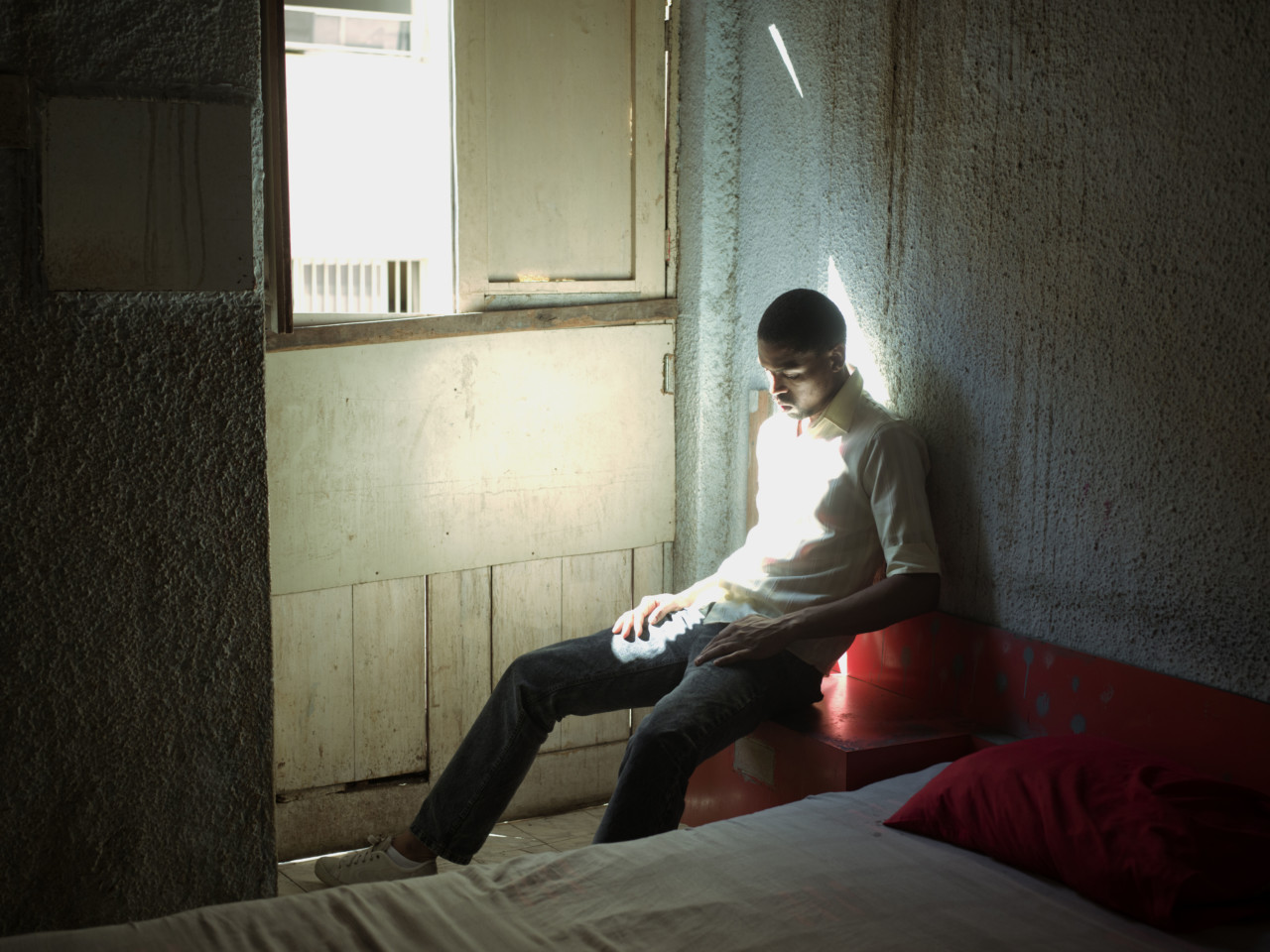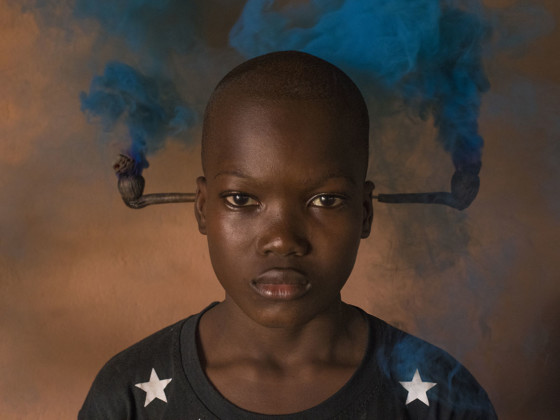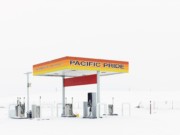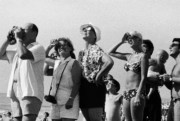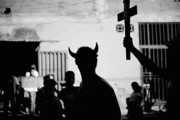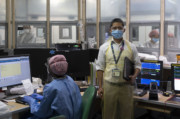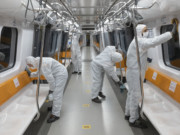The Real in the Unreal
Cristina de Middel on working towards ‘visual equality’ through her boundary-blurring practice
Although she cut her teeth for several years in a newsroom, Magnum photographer Cristina de Middel’s approach to documenting the world through photography is a far cry from traditional reportage techniques. Through tapping into fables, employing experimental tactics, exploring digital media, and constructing staged set-ups, the Spanish-Belgian photographer argues she can help to break free of conventions in order to show the way the world really is. Her well-known series, The Afronauts, employs staging and costume to explore the representation of Africa while challenging ideas around diaspora, race, and societal power structures. Gentleman’s Club, her ongoing work, aims to address the woman-focussed media coverage of the sex industry.
Here, Cristina de Middel discusses how her unconventional approach to photographing the world brings to the fore truths that traditional documentary cannot easily translate.
Cristina de Middel’s online course, Stranger than Reality, is now available on Magnum Learn. Complete with 18 chapters, 10 workbooks, and over 15 exercises, De Middel provides a comprehensive guide on how to find and develop your own unique voice, how to communicate through photography and how to stay curious. Find out more here.
In a world were millions of images are created, published and shared every day, what role does the photographer have to play?
I don’t believe the photographer has any specific role to play in terms of responsibility. I do not think there is anything like a mission or duty, but it is true that the photographer is much more visually educated than the average person and in terms of that, they can provide narratives and visions that are more efficient as a piece of communication. Then comes the personal drive and motivation of each photographer and that can go from wanting to take pictures of shiny cars in California to covering conflict, but it is a choice, not a duty. In my case I am especially worried about how the world is described by photography and most of my projects try to provide a point of view that questions the traditional use of photography in building what we understand as truth.
Images of suffering, today, often seem to be met with indifference rather than empathy. How can photography provoke real change?
In my opinion the world has been explained to us using the same words and structures for too long. It is not that we are insensitive to the terrible dramas that affect the globe, I believe we just got bored. We need to understand that information is not neutral and in times when publications no longer hide their position towards certain policies or politicians, it is dangerous not to adapt the way we handle information to this new context.
Imagine if the advertising companies were trying to sell us shampoo or cigarettes with the same strategy as 50 years ago, it would be so ridiculous. But still, certain ways of communicating and shaping the truth perpetuate a narrative and a storytelling structure that is almost exhausted.
For example, how many pictures of the Israeli-Palestinian conflict do we need to really understand what is going on there? Not to mention Syria. When I say “understand” I mean having access to the information that could help position you in an honest way. Also there is hardly any information about what we could do to stop or prevent these realities, we are limited to consuming images and information about situations that we have very little control of and do not fully understand because there is systematic hiding of sensitive information. How can you remain interested and engaged when the only thing you can do is worry from your sofa?
I believe the next step should be to go back to real independent journalism by giving voice to the authors and understanding that the more opinions we consume, the closer we get to the truth. Also, the dramatic structure of story-telling needs to be revised as things cannot be explained anymore with the ‘good guy vs. bad guy’ structure. Reality is complex and we need to embrace its complexity, sacrificing the comfortable feeling that the idea of truth has traditionally provided.
"In my opinion the world has been explained to us using the same words and structures for too long"
- Cristina de Middel
Where do you feel you fit into all this?
I honestly do not know. When I stepped out of straight photojournalism I did it because it was the only way to stay sane. My work is a game I play, first with myself, and then I share it with others. But there is nothing like a strategy or a mission. I just ask questions and have a very critical approach to any type of information that is presented to me. I guess that is an attitude I would love to see in the general audience and my work is an invitation to take up that approach.
In some of your projects you direct or stage the set-up to create a highly stylized scene. What truths can artificial set-ups reveal?
I would say that only 30% of the pictures I take are staged, the rest is pure documentary with no manipulation. What is more fictional in my approach is the narrative structure, as I borrow the best stories from literature and cinema to better convey the message. I use stories that have a proven historic impact and that resonate with the audience, in a different part of their brains. Fables, myths, blockbusters, best-sellers are all stories that worked and that people love and I do get a lot of inspiration from them. The way a problem is presented is almost as important as the problem itself when it comes to finding solutions, so when the reality I have in front of the camera is accurate but not compelling, I just push it and adapt it to the structure I have chosen.
I know it is a sensitive modus operandi for documentary photography but many documentaries in cinema use the same method with no controversy at all. The best example is wildlife documentaries. There are so many tricks used to build a narrative with the wild animals — hidden cameras, traps, motion sensors, and artificial lighting. Plus you have a narrator who is superimposing a story that never really happened so that the audience can better engage, and eventually better understand, the nature of the creature.
You say that your work is an antidote to the usual ways certain subjects are portrayed – for example ‘Gentleman’s Club’ is an antidote to the fact that most coverage of sex work focuses on women. Can you tell us more about the impetus for this work?
As a woman I am truly concerned about the moves necessary to change the paradigm of the role of women in society, but I am not an activist in terms of attending demonstrations. I am, of course, not opposed to them but I believe I can be much more useful in my field of ‘expertise’, which is image and representation.
The sick relationship between women and photography goes beyond not having enough women working and succeeding in the business, it goes deep into an ideology that uses the body of a woman to perpetuate roles that are far from promoting equality and respect. There is a lot to do in courts and congresses, but there is much more to be done in the media and in the entertainment industry because that resonates directly with the audience regardless of their political beliefs.
With the series Gentleman’s Club I just followed the idea of revisiting traditional photojournalistic subjects with a critical eye. Sex work is so loaded with romanticism and at the same time is so badly explained in the media. If we had to rely on the typical sorts of images made around sex work to explain it, one would think that it is a business based on women getting naked in dirty rooms and we all know that this is eventually just half of the business. It is not a coincidence that hardly any men appear, that there is no mention and no visual reference to clients and pimps. This lack of information affects women by painting those depicted as victims, but this misrepresentation also harms the audience.
A direct way to confront this situation and work towards visual equality is to create pieces and projects that inject some balance. Sex work is one of those traditional photojournalistic subjects but there are many others.
"Instead of complaining about the media approach I started creating the versions of reality that I would love to find in the kiosk"
- Cristina de Middel
What other preconceived notions have you been interested in deconstructing and how has that manifested in your work?
I try to scan publications and the media in general to identify those subjects that in my opinion could be explained in a better way. It all started with Africa but there are other clichés like violence in Latin America, migration, the spirituality of India, the ‘devilish’ African religions or even stereotypes of Spain and other touristic locations that deserve some attention. I am currently working on a different perspective of the Central American migration process, traveling around Mexico and the US and also finishing the edit of a long term project about African-rooted religions along slave trade routes, together with my partner, the artist Bruno Morais.
How much did your background as a staff photographer at a newspaper motivate your desire to address the way the kinds of images employed by the media reinforces a narrow world view?
From my years as a photojournalist I gained my way of working and the frantic rhythm that I am comfortable with, but I also learned how to process the news I read or watched. Most of the time I did not agree with how my images were used and how the reality I had experienced in the streets was reduced in captions and headlines. That frustration became the core motivator of my personal work. I started creating my own version of the news in a very basic blog that I updated every night for a few years. It was like my little personal revenge, a way to stay sane and not feel I was selling my soul too much.
"I use stories that have a proven historic impact and that resonate with the audience"
- Cristina de Middel
Then at one point that B-side part of my work became more and more important and I started seeing much more potential in that tangential language than in the straightforward approach that I had to cultivate for my job.
I started doing it for myself. Instead of complaining about the media approach. I started creating the versions of reality that I would love to find in the kiosk. That is how and why I did The Afronauts, and then things started falling into place.
Hear more from Cristina de Middel in her online course, Stranger than Reality, available now on Magnum Learn.


